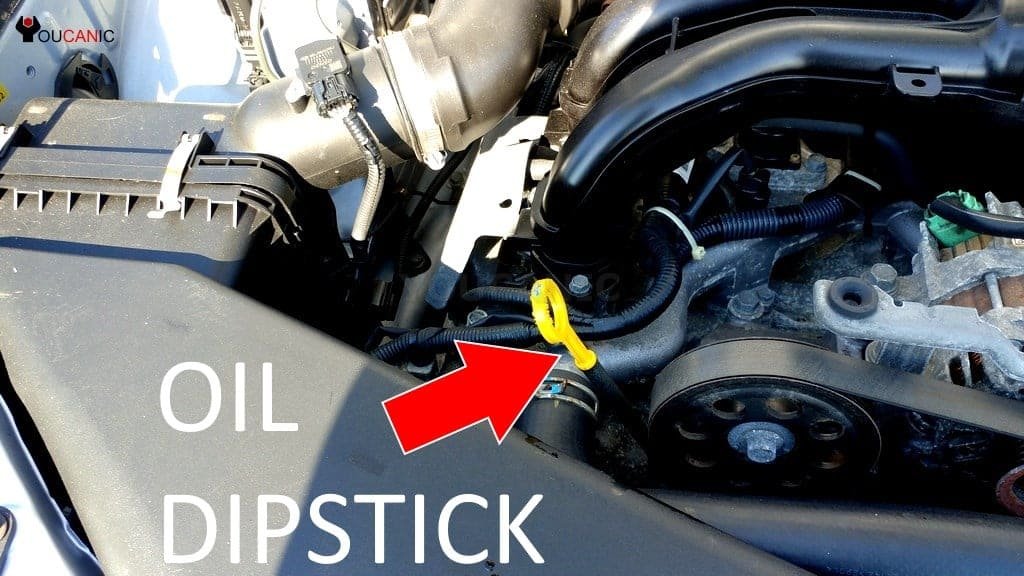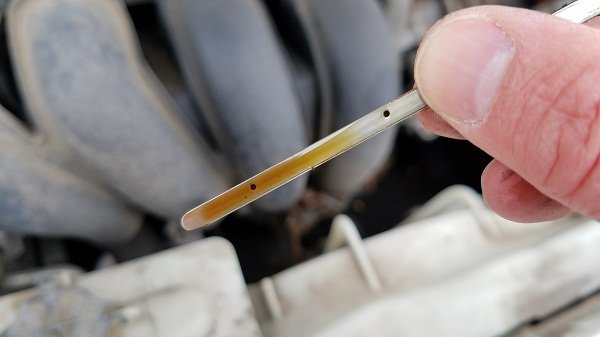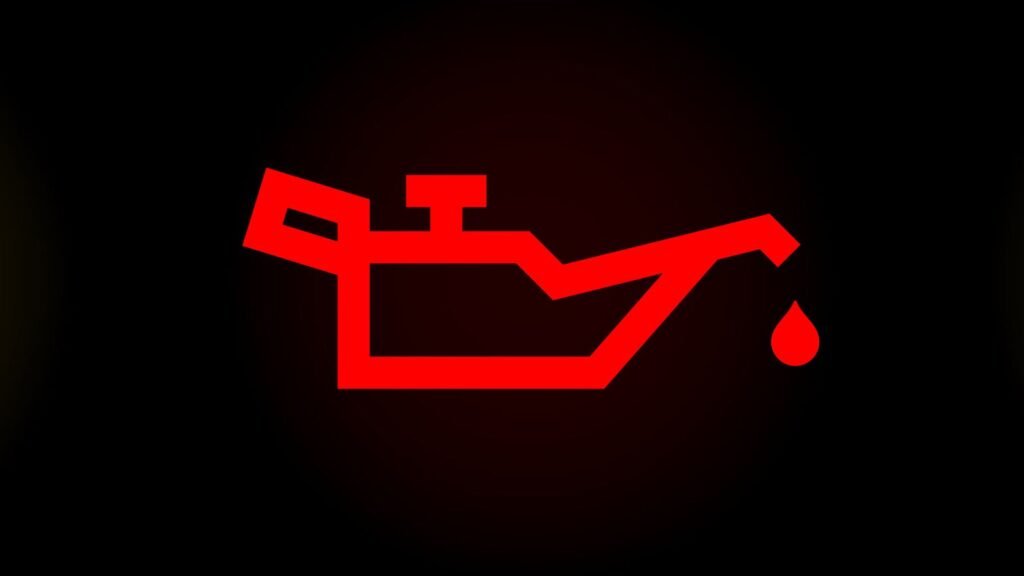(Disclaimer: Images used in this article are for illustrative purposes and may be subject to copyright. If you are the owner and believe their use is unauthorized, please contact us for removal or attribution.)
Table of Contents
Understanding the Engine Oil Dipstick’s Purpose, Usage, and Maintenance
Maintaining the health of your vehicle involves more than just regular servicing and occasional checks. One of the simplest yet most critical components in ensuring your engine runs smoothly is the engine oil dipstick. This unassuming tool allows you to monitor the oil level and condition, helping to prevent engine damage and maintain optimal performance. This article provides an in-depth look at the engine oil dipstick, including its purpose, location, usage, and how to interpret its readings.
1. What Is an Engine Oil Dipstick?


Images Via Wikipedia, Pexels.com
The engine oil dipstick is a long, thin metal rod, usually with a colored handle for easy identification. Its primary function is to measure the oil level in the engine. However, it also provides crucial information about the condition of the oil, which can indicate the overall health of the engine.
2. Where Is the Oil Dipstick Located?




Images Via Duumies.com, youcanic.com, pexels.com
The oil dipstick is typically located in the engine bay. When you open the hood of your vehicle, you should see a circular handle, often colored orange, yellow, or white. This handle makes the dipstick easy to locate. The position of the dipstick can vary depending on the vehicle make and model, but it is generally found either at the top or the side of the engine.
3. How Do I Use the Engine Oil Dipstick?

Image Via Pexels.com
Checking your engine oil level is a simple process that you can do yourself with the following steps:
- Ensure Safety: Park your vehicle on level ground, turn off the engine, and engage the parking brake. Allow the engine to cool down if it has been running.
- Locate and Remove the Dipstick: Find the dipstick handle and pull it out slowly and steadily.
- Clean the Dipstick: Use a clean cloth or paper towel to wipe the oil off the dipstick. This step ensures you get an accurate reading.
- Reinsert the Dipstick: Fully insert the dipstick back into its tube until it is securely in place.
- Read the Oil Level: Pull the dipstick out again and observe the oil level against the markings on the dipstick.
4. How Do I Read the Oil Level?


Images Via Automotive Technology By Sinclair College, www.autodeal.com.ph
The dipstick will have markings at its end, indicating the safe range for the oil level. These markings can vary but typically include:
- C (Cold) and H (Hot): Indicating the oil level when the engine is cold or hot.
- MIN (Minimum) and MAX (Maximum): Showing the safe range for oil levels.
- Dots or Cross-Hatch Patterns: Some dipsticks use these instead of letters.
Your oil level should be between the minimum and maximum markings. If it is below the minimum mark, you need to add oil. If it is above the maximum mark, there is too much oil in the engine.
5. What If My Engine Has Too Much Oil?


Images Via Cars.com, autojosh.com
Overfilling the engine oil can lead to several issues. Excess oil can become aerated by the crankshaft, creating a foamy substance that lacks proper lubrication qualities. This can result in increased engine pressure and potential oil leaks from seals and gaskets. To correct this, drain the excess oil until the level is within the recommended range.
6. What If My Engine Has Too Little Oil?
Insufficient oil levels mean inadequate lubrication, leading to increased friction and potential engine damage. If the oil level is low, add oil gradually, checking the dipstick frequently to ensure you do not overfill.
7. How Do I Add More Oil?


Adding oil to your engine is a straightforward process:
- Locate the Oil Filler Cap: This cap is usually on the top of the engine and labeled “Oil.”
- Add Oil Slowly: Pour a small amount of oil into the filler cap using a funnel to prevent spills.
- Check the Oil Level: After adding oil, wait a few minutes and check the dipstick again. Continue adding oil in small increments until the level is correct.
8. How Will I Know When to Change the Engine Oil?


Images Via girlingtongarage.com, motorpoint.co.uk
Engine oil degrades over time and with use, losing its effectiveness in lubricating and protecting engine components. Here are ways to determine if it’s time for an oil change:
- Consult the Owner’s Manual: Follow the manufacturer’s recommended oil change intervals, which are typically every 3,000 to 5,000 miles for conventional oil and 7,500 to 10,000 miles for synthetic oil.
- Inspect the Oil: Fresh oil is amber and translucent. If the oil appears dark, gritty, or sludgy, it’s time for a change.
- Engine Oil Light: Some vehicles are equipped with a sensor that can detect low oil levels. If the oil level is too low, the light will come on, indicating that more oil is needed to keep the engine running smoothly.
9. What Does Finding Grayish, Whitish, or Reddish Oil on the Dipstick Mean?


Images Via americanandimportautorepair.com, motor283.com
If you notice unusual colors in your engine oil, it could indicate a serious problem:
- Grayish or Whitish Oil: This can suggest a coolant leak into the engine oil, often due to a blown head gasket. The oil may appear milky or frothy.
- Reddish Oil: If the oil is reddish, it might be due to Automatic Transmission Fluid (ATF) mixing with the engine oil, indicating a transmission fluid cooler leak.
In any case of unusual oil color, have your vehicle inspected by a professional mechanic immediately.
Conclusion
The engine oil dipstick is a vital tool for monitoring and maintaining your vehicle’s engine health. By regularly checking the oil level and condition, you can ensure your engine runs smoothly and prevent costly repairs. Always refer to your vehicle’s owner’s manual for specific instructions and maintenance schedules. With a little knowledge and regular attention, you can keep your engine in top condition and enjoy a reliable, efficient vehicle.
Engine Oil Dipstick: FAQ
What is an engine oil dipstick?
The engine oil dipstick is a long, thin metal rod with a handle used to measure the oil level in your vehicle’s engine and provide insights into the oil’s condition.
Where can I find the oil dipstick in my car?
The oil dipstick is typically located in the engine bay. Look for a circular handle, often colored orange, yellow, or white, usually found at the top or side of the engine.
How do I use the engine oil dipstick?
- Park on level ground and turn off the engine.
- Locate and remove the dipstick.
- Clean the dipstick with a cloth or paper towel.
- Reinsert the dipstick fully.
- Remove it again to check the oil level.
How do I read the oil level on the dipstick?
The dipstick has markings such as C (Cold), H (Hot), MIN (Minimum), and MAX (Maximum), or dots/cross-hatch patterns. The oil level should be between the minimum and maximum markings.
What should I do if my engine has too much oil?
Drain the excess oil to prevent aeration, increased engine pressure, and potential oil leaks from seals and gaskets.
What should I do if my engine has too little oil?
Gradually add oil, checking the dipstick frequently to ensure you do not overfill.
How do I add more oil to my engine?
- Locate the oil filler cap on the top of the engine.
- Add oil slowly using a funnel.
- Check the oil level after a few minutes and add more if needed.
How will I know when to change the engine oil?
Follow the manufacturer’s recommended intervals in the owner’s manual, typically every 3,000 to 5,000 miles for conventional oil and 7,500 to 10,000 miles for synthetic oil. Also, inspect the oil for a dark, gritty, or sludgy appearance.
What does grayish, whitish, or reddish oil on the dipstick mean?
- Grayish or Whitish Oil: Indicates a coolant leak into the engine oil, often due to a blown head gasket.
- Reddish Oil: Suggests Automatic Transmission Fluid (ATF) mixing with the engine oil, indicating a transmission fluid cooler leak.
In any case of unusual oil color, have your vehicle inspected by a professional mechanic immediately.
Car Sales in India: September 2024 Report – Maruti, Hyundai, Mahindra, Tata, and Toyota
The car sales report for September 2024 reveals a mixed bag for major automobile manufacturers…
Is “MF Ghost” Worth Watching? A Detailed Review
Anime enthusiasts and car lovers alike have been buzzing about MF Ghost, a successor to…
Ryan Reynolds’ Car Collection: What Cars Does Deadpool Drive?
Ryan Reynolds’ Car Collection: An In-Depth Look at the Vehicles Owned by the Hollywood Star…
How to Get Tar Off Your Car: A 6 Step Comprehensive Guide
Nothing can dampen your day quite like discovering tar splattered on your car. Whether it’s…
Engine Oil Dipstick: 9 Critical Questions Answered for Optimal Engine Health
(Disclaimer: Images used in this article are for illustrative purposes and may be subject to…
Top 10 Elite Hatchback Cars to Enhance Your Driving Experience
Hatchback Cars have always been a favorite among car enthusiasts for their compact design, practicality,…





